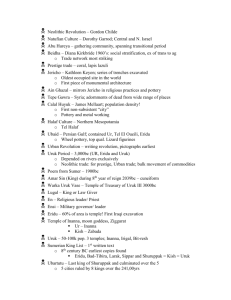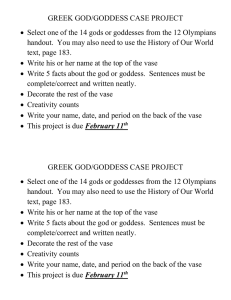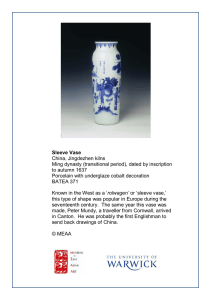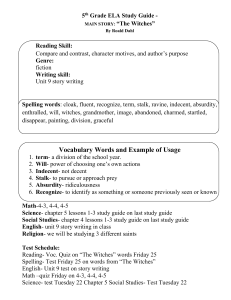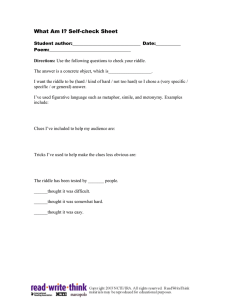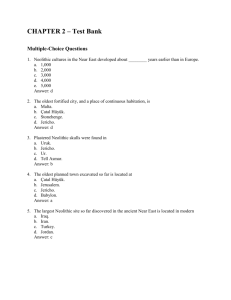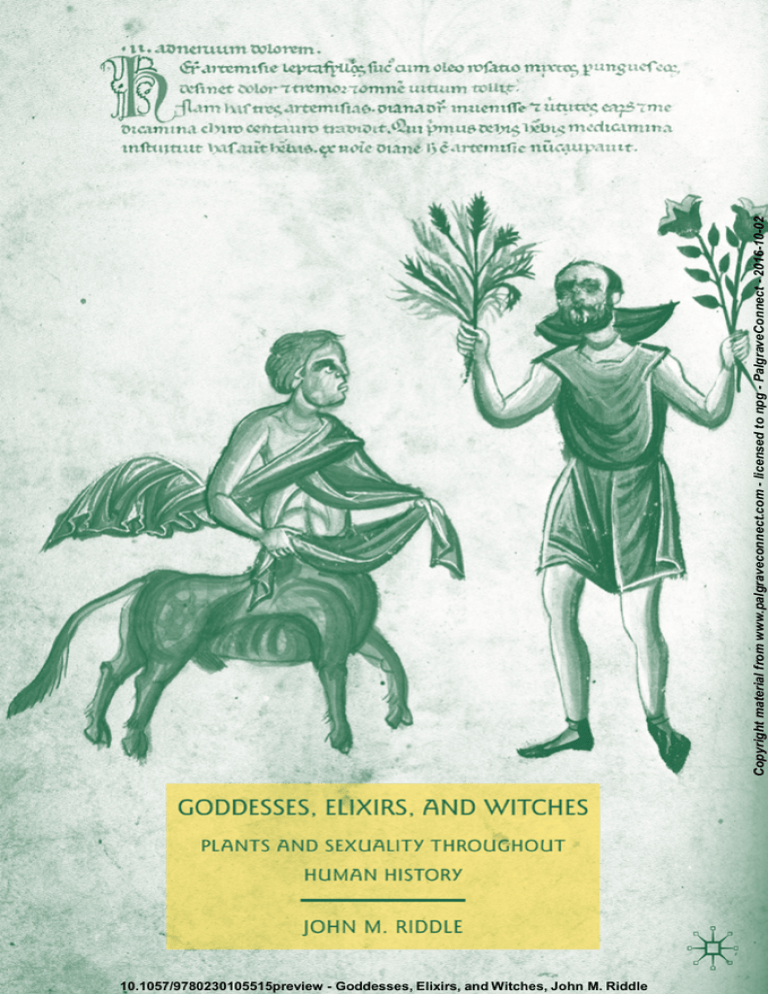
10.1057/9780230105515preview - Goddesses, Elixirs, and Witches, John M. Riddle
Copyright material from www.palgraveconnect.com - licensed to npg - PalgraveConnect - 2016-10-02
Copyright material from www.palgraveconnect.com - licensed to npg - PalgraveConnect - 2016-10-02
Goddesses, Elixirs, and
Witches
10.1057/9780230105515preview - Goddesses, Elixirs, and Witches, John M. Riddle
Copyright material from www.palgraveconnect.com - licensed to npg - PalgraveConnect - 2016-10-02
This page intentionally left blank
10.1057/9780230105515preview - Goddesses, Elixirs, and Witches, John M. Riddle
Plants and Sexuality
throughout Human History
JOHN M. RIDDLE
10.1057/9780230105515preview - Goddesses, Elixirs, and Witches, John M. Riddle
Copyright material from www.palgraveconnect.com - licensed to npg - PalgraveConnect - 2016-10-02
Goddesses, Elixirs, and
Witches
GODDESSES, ELIXIRS, AND WITCHES
Copyright © John M. Riddle, 2010.
All rights reserved.
Where this book is distributed in the UK, Europe and the rest of the
world, this is by Palgrave Macmillan, a division of Macmillan Publishers
Limited, registered in England, company number 785998, of Houndmills,
Basingstoke, Hampshire RG21 6XS.
Palgrave Macmillan is the global academic imprint of the above companies
and has companies and representatives throughout the world.
Palgrave® and Macmillan® are registered trademarks in the United States,
the United Kingdom, Europe and other countries.
ISBN: 978–0–230–61064–4
Library of Congress Cataloging-in-Publication Data is available from the
Library of Congress.
A catalogue record of the book is available from the British Library.
Design by Newgen Imaging Systems (P) Ltd., Chennai, India.
First edition: February 2010
10 9 8 7 6 5 4 3 2 1
Printed in the United States of America.
10.1057/9780230105515preview - Goddesses, Elixirs, and Witches, John M. Riddle
Copyright material from www.palgraveconnect.com - licensed to npg - PalgraveConnect - 2016-10-02
First published in 2010 by
PALGRAVE MACMILLAN®
in the United States—a division of St. Martin’s Press LLC,
175 Fifth Avenue, New York, NY 10010.
Acknowledgments
vii
List of Abbreviations
ix
Introduction
1
1
Inanna’s Huluppu Tree, Pomegranates, and Sexual Power
2
Pomegranate as Eve’s Apple
33
3
Mandrake, the Love Apple, and the World’s Religions
55
4
Artemisia, the “Mother Herb”
79
5
The Chaste Tree
113
6
Hermes, Herbs, Elixirs, and Witches
129
5
Notes
149
Bibliography
185
Index
207
10.1057/9780230105515preview - Goddesses, Elixirs, and Witches, John M. Riddle
Copyright material from www.palgraveconnect.com - licensed to npg - PalgraveConnect - 2016-10-02
Contents
Copyright material from www.palgraveconnect.com - licensed to npg - PalgraveConnect - 2016-10-02
This page intentionally left blank
10.1057/9780230105515preview - Goddesses, Elixirs, and Witches, John M. Riddle
I acknowledge the assistance of two colleagues who have read parts or the entirety
of this manuscript; each rendered invaluable, expert suggestions and corrections.
John Scarborough (University of Wisconsin) and Anne Van Arsdale (University of
New Mexico) are extraordinary colleagues whose love of history generously extends
to helping others uncover its lessons. Francis Brévart kindly shared with me some of
his unpublished researches on wonder drugs, now in print. Kaye Hughes read the
manuscript with an editor’s eye and two of my students, Robert West and Christopher
Musto assisted me with checking citations. I alone am responsible for any remaining
errors. Palgrave’s editors were enablers in the best sense of the word.
10.1057/9780230105515preview - Goddesses, Elixirs, and Witches, John M. Riddle
Copyright material from www.palgraveconnect.com - licensed to npg - PalgraveConnect - 2016-10-02
Acknowledgments
Copyright material from www.palgraveconnect.com - licensed to npg - PalgraveConnect - 2016-10-02
This page intentionally left blank
10.1057/9780230105515preview - Goddesses, Elixirs, and Witches, John M. Riddle
ABD
ANET
AOS
CAD
CH-1
CMG
CML
DAB
H
MTU
OED
PL
RAA
RA
ZA
Anchor Bible Dictionary, 6 vols. David Noel Freedman et al. eds. New
York: Doubleday, c. 1992.
Ancient Near Eastern Texts Related to the Old Testament. James
B Pritchard, ed. 3rd ed. with suppl. Princeton, NJ: Princeton University
Press, 1969.
American Oriental Series. Chicago-Glückstadt, 1956.
The Assyrian Dictionary of the Oriental Institute of the University of
Chicago, 15 vols. Chicago: Oriental Institute, 1956–.
Corpus Hermetica, Hermetica: The Greek Corpus Hermeticum and the
Latin Asclepius in a New English Translation, with notes and introduction.
Brian P. Copenhaver. Cambridge: Cambridge University Press, 1992.
Corpus Medicorum Graecorum. Berlin: 1927–.
Corpus Medicorum Latinorum. Leipzig: Teuber, 1915–.
Dictionary of Assyrian Botany. R. Campbell Thompson. London: British
Academy, 1949.
Hermetica: The Ancient Greek and Latin Writings which Contain Religious
or Philosophic Teachings Ascribed to Hermes Trismegistus. Walter Scott,
trans., in 4 vols. Boston: Shambhala, 1985.
Die babylonische-assyrische Medizin in Texten und Unterschungen. Franz
Köcher, Robert D. Biggs, and Marten Stol, eds. 7 vols. Berlin: de
Gruyter, 1963–2005.
Oxford English Dictionary. Electronic edition.
Patrologiae cursus completus. Series Latina. J. P. Migne, ed. Paris: Migne,
44–1882., 221 vols.
Revue d’Assyriologie et d’Archéologie Orientale, 1884–.
Reallexikon der Assyriologie. 12 vols. Berlin, New York; W. de Gruyter,
1932–.
Zeitschrift für Assyriologie und verwandte Gebiete. Berlin: de Gruyter,
1886–.
10.1057/9780230105515preview - Goddesses, Elixirs, and Witches, John M. Riddle
Copyright material from www.palgraveconnect.com - licensed to npg - PalgraveConnect - 2016-10-02
Abbreviations
Copyright material from www.palgraveconnect.com - licensed to npg - PalgraveConnect - 2016-10-02
This page intentionally left blank
10.1057/9780230105515preview - Goddesses, Elixirs, and Witches, John M. Riddle
I know when the good goddess gave humans the knowledge of how to plant seeds
and begin agriculture. I know because my professor in Chapel Hill told us back in
the early 1960s. According to Professor Wallace Caldwell, it went like this: It was a
bright, beautiful, crisp day in late March in the year—or about it—11,304 Before
Our Common Era. The place was the hills of Kurdistan. The person who communicated with the goddess was Ugla. Gods and goddesses were mysterious forces that
protected and helped people, but they could also be capricious and potentially mean.
The important thing was to know what pleased them and stay on their good side.
Ugla had spent much of the day gathering seeds of a wild, winter, nutritious
grass to go with meat that the men were expected to bring home from their hunt.
Johnny, a prepubescent boy, was to help her, as he was not old enough to hunt with
the men, although he thought himself ready. Little by little, a stalk here, one there,
Ugla gathered the wild rye that she placed seed by seed in a wicker basket that her
tribe had learned to make more than 40,000 years before her day. Johnny was more
of a hindrance than help. Ugla and Johnny went back in the campsite, where she
was attending to the fire, when something marvelous happened. Ugla told Johnny
to fetch the basket so that she could crush the seed on a flat rock with a hand-held
rock. Her bread would be crude, this being a time before the discovery of yeast, but
I have had bread in places in the world that must have been close to that of Ugla’s
culinary art.
In a series of utterances, what she spoke had a subject (“Johnny”), a verb (“bring”),
indirect object (“to me”), and a direct object (“the basket”). Language in its complexity predated history. Alas, clumsy Johnny tripped and spilled the basket. Ugla
spanked him, hard, and she did so with language her kin judged to be profane if not
obscene. Furious Ugla and crying Johnny picked up what seeds they could recover,
but the emotion and anger of the moment caused some loss of seed.
Five months later, Ugla’s tribe returned to the same campsite, since her tribe
followed the annual animal migratory herds as they moved between winter and
summer pasture lands. What did she see? She saw grain growing in greater density than she or anybody had ever seen and at the very spot where she spanked
Johnny. Quickly she reasoned that the Force was pleased by what had taken place.
She regarded the Force to be a goddess, because women bring forth life. Ugla sought
to duplicate the scene. In the same basket she gathered the seed grain, much easier
now that it was in the same place where Johnny fell. She instructed a recalcitrant,
10.1057/9780230105515preview - Goddesses, Elixirs, and Witches, John M. Riddle
Copyright material from www.palgraveconnect.com - licensed to npg - PalgraveConnect - 2016-10-02
Introduction
Goddesses, Elixirs, and Witches
whiny Johnny to spill, purposefully, a basket of the grain. She called him with the
same words as before, he spilled it, and she spanked him uttering the same, nasty
words. By golly, the good goddess was again truly pleased. The following year, Ugla
performed the same ritual, but this time she had Johnny to spread out the spilled
seed. And she was able to do this in other campsites, so that there was a small field
of grain awaiting their arrival each time. After a period, her clan reached a decision perhaps as late as a generation or two after Ugla, who had duly instructed her
female successor about the means to communicate with the goddess. Knowing the
ritual that pleased the goddess who caused grain to grow, they reasoned that it was
easier to stay in one place: plants are more reliable and less perishable than meat.
Agriculture had begun because humans knew how to please the goddess. The animal herds would come by twice annually and, between the migrations, the humans
could supplement their plant food with meat from small game and fish. Although
from our perspective the agricultural revolution was a monumental technological
advance in human history, Ugla’s people thought it was a divine blessing because
they had learned to communicate with the goddess and how to please her so that she
would continue giving her blessings.
How did Professor Caldwell know so much about an event approximately 7,000
years before writing and more than 13,000 years before his time? Professor Caldwell
had slitters of fact and from them spun his learned, albeit conjectural, tale. In the
flat river areas south of Kurdistan before the grain could be sown in the spring, a
priestess spanked a prepubescent boy; the words she used were so archaic that no one
knew what they meant. The words were magic, because they forced the goddess to
grant them fertile fields. The goddess was more esteemed than any other force and
she was given a name. There was a gap of over six millennia between Ugla and the
rituals used in Uruk and early Sumer. How do we know that Ugla was in Kurdistan?
We found some of the earliest agricultural villages there. Weather?—well, that was
conjecture, but probably at that time of the year it was clear and crisp. I suspect that
Professor Caldwell made up the names of Ugla and Johnny.
By the time humans could write, first in Mesopotamia, a little later in Egypt,
the limited number of edible plants that humans could metabolize in their digestive tract was already known. The discovery of most food plants can be traced to
prehistoric times, with only a very limited number discovered in a historic period.
The same, I am led to believe, happened to the medicinal uses of plants and other
medicines from animals and minerals. The discovery of medicinal uses began before
humans were humans; many of us believe in the evidence of primate and other
animal medicinal uses of plants. Animal pharmacognosy is the term we now call
animal effective use of medicinal plants. A plant was ingested and found to be a laxative; another, placed on a wound, eased the pain, and promoted healing. Animals
learned and so did humans who followed. One taught the other as mother teaches
daughter and father, son. Unfortunately in the last millennium, we have lost much
of what humans learned. In this study some of what we learned and how it changed
history will be explored and, equally important, why we lost what we learned.
The forthcoming chapters will name some of the most important herbal medicines known before history and relate how each plant is intertwined historically so
as to alter the course of events. I claim originality, but my stories are built on the
10.1057/9780230105515preview - Goddesses, Elixirs, and Witches, John M. Riddle
Copyright material from www.palgraveconnect.com - licensed to npg - PalgraveConnect - 2016-10-02
2
3
work of outstanding scholars (Sumerologists, Egyptologists, Assyriologists, biblical
scholars, classicists, and medievalists) and excellent scientists (botanists, chemists,
biochemists, pharmacologists, microbiologists, medical anthropologists, reproductive physiologists, and veterinary and human clinical physicians). These scholars’
and scientists’ talents enable us to understand the historical record through clever
chemistry and sharp clinical observations.
A score or more years ago, I taught a component in a course on medicinal plants
in near-by Duke University’s Medical School. My lectures were those of an historian; in one lecture I told the physicians-to-be about the transmission of the manuscripts of Dioscorides, the prominent pharmacist whose books were consulted from
the first through the sixteenth century. While showing one slide of a beautiful medieval herbal, I told them what the plant was alleged to have cured. A student asked:
“Well, did it work?” Embarrassed, I replied: historians don’t answer that question.
At this reply, he put down his pen with a thud and took no more notes—neither did
others in the class. I realized that it was a reasonable question that I had to confront
if I had anything to teach them.
In the years that followed, I concluded that most of the drugs of ancient West Asia
and Egypt were more a linguistic problem of identification than a medical determination. Not until we get to the works attributed to Hippocrates, the Father of
Medicine, can we reasonable identify most of the plants and other drugs. I identified
the plants that the Hippocratic writers used, some 257, and found that 89.5 percent
of what they used as drugs are found in modern guides to pharmacy and pharmacognosy.1 Of the twenty-seven exceptions not found in our pharmacy guides, which
the Greeks named as drugs, we consider most to be foods. Two examples of the
twenty-seven exceptions: spinach was a drug to the ancient Greeks, but we would
not place it in our pharmacopoeia. Why not? If one has dietary iron deficiency
anemia (many of us do, myself included), spinach ingested acts like a drug. Another
example was water, which no pharmaceutical guide today would call a drug. Why
not? Hydration is extremely important for health, and dehydration is treated with
water. The leading cause of infant mortality is diarrhea, whose address is hydration.
In short, what the Greeks considered to be drugs, we know through our usage to be
drugs. This study does not necessarily mean that the ancients used drugs precisely as
we do. For example, the Greeks used cannabis to stimulate lactation. To the extent
that we use cannabis as a drug, our medical purpose is different. Reasonably, what
the ancients knew to be drugs we use as drugs. We use many terms now for herbal
medicines—alternative, complementary, natural, among others. Scientists usually
call them natural-product drugs, but, in truth, they are products of human learning.
In our disregard for the past, we have neglected to learn what our ancient ancestors
knew and used to their benefit.
As I researched the history of drugs over these many decades, I realized that
certain drugs were associated with goddesses, and the realization led to this book.
Caldwell’s story about Ugla provides insight about the legends we encounter in these
chapters. The stories begin when we have records, artifacts mostly, and legends later
committed to writing, but, in time, a happy story becomes sad. In looking for elixir
and miracle drugs, Western society associated the goddesses’ special drugs with evil
intent and witchcraft. What humans gained in knowledge was mostly lost.
10.1057/9780230105515preview - Goddesses, Elixirs, and Witches, John M. Riddle
Copyright material from www.palgraveconnect.com - licensed to npg - PalgraveConnect - 2016-10-02
Introduction
Copyright material from www.palgraveconnect.com - licensed to npg - PalgraveConnect - 2016-10-02
This page intentionally left blank
10.1057/9780230105515preview - Goddesses, Elixirs, and Witches, John M. Riddle
Inanna’s Huluppu Tree,
Pomegranates, and
Sexual Power
Some learned thieves caused a catastrophe in Iraq on April 10, 2003. They robbed
from and, in other cases, destroyed their and our ancient heritage from the Fertile
Crescent. They broke into the archaeological museum in Baghdad, a city “liberated”
by American armed forces. The first thieves knew what they were taking, namely
the most valuable and transportable artifacts, but, seeing what was taking place,
other opportunistic looters joined in the fray by taking and, frequently, destroying ancient artifacts with mallets and clubs. Professor Michalowski of Michigan
did not exaggerate when he wrote that this was “a tragedy that has no parallel in
world history; it is as if the Uffizi, the Louvre, or all the museums of Washington
DC had been wiped out in one fell swoop.” 1 In three days of blatant robbery, the
museum lost approximately 15,000 objects; among the treasures lost was a vase that
contained key clues about plants, medicine, ritual, and religion. Who were these
thieves? We do not know, but an Italian helicopter captured pictures of the looting from a predictably safe height. On April 14, the day after the museum looting
ended, the museum’s director saw the devastation and lamented: “It’s gone, and it’s
lost. It’s too late. It’s no use. It’s no use.”2
However learned the thieves were, they did not know that one of the earliest artifacts there was a vase from ancient predynasty Uruk, containing a relief that reveals
a clue so profound that it causes us to reexamine our understanding of medical
botany, family history, ritual, and religion. They did not know; this book proposes
to unlock the meaning of the vase. The vase is named after the city of Uruk where
it was found near the modern Iraqi city of Warka. (Sometimes the vase is called by
the Arabic word Warka, whereas Uruk is called Erech in the Bible.) The so-called
Uruk period (ca. 4000 to 3100 BCE) is the predynastic period immediately before
the Sumerian culture. The vase contains the clues that connect the legend about
Inanna, the Sumerian fertility goddess with the legend about the huluppu tree and
pomegranates. Alas, these thieves seemingly unappreciative of history shattered the
famous vase. In chapters one and two, I propose to disclose that the Uruk vase
10.1057/9780230105515preview - Goddesses, Elixirs, and Witches, John M. Riddle
Copyright material from www.palgraveconnect.com - licensed to npg - PalgraveConnect - 2016-10-02
CHAPTER 1
Goddesses, Elixirs, and Witches
displays a profound insight about the biblical Genesis story of creation. The meaning of Genesis, the Garden of Eden, and the fall is made clearer by this shattered
vase that is dated between 3300 and 3100 BCE, a date more than 2,000 years before
Genesis was written and 2,500 years before the comparable passage about Adam,
Eve, and the Garden of Eden. The Uruk vase was manufactured and artistically
decorated 5,000 years before our time.
Before we look at what was on the vase, a few words about how its pieces came
back to the Baghdad Museum. The looting, having been allowed—if that is not
too fine a word for the circumstances—was the responsibility of the Americans
who, together with the museum staff, had to pick up what pieces there were. Art
and archaeological dealers worldwide were alerted to look for salesmen bearing the
ancient artifacts. Within weeks of the destruction, Col. Mathew Bogdanos (U.S.
Marines), a classics major with previous law-enforcement experience, volunteered
for the assignment to reconstruct the museum as best he could.3 He declared an
amnesty for those returning its treasures and “no questions” would be asked; he even
served the customary tea to those returning artifacts. Many pieces were returned,
even some taken from the museum shop; among them was the Uruk vase in the back
of a pick-up truck. It had been broken, with pieces from its art panels missing. “No
questions” meant no information of who took it; we may conjecture the “learned”
thieves may have taken it, but, inasmuch as the vase was heavy alabaster more than a
meter high, it probably was broken in transit. Doubtlessly realizing that an attempt
to sell its pieces was too risky, the thieves (or their surrogates) handed it over to Col.
Bogdanos’s men and either no question was asked or it was not reported.4
Inanna’s Vase from Uruk
I saw the Uruk vase, depicting Inanna, goddess of love, when I visited Baghdad
in August 1973. The temperature was 50° Celsius (slightly more than 120° F.) in
a day before much in the way of air conditioning had reached Baghdad. I think of
Gertrude Bell, who died at the age of fifty-eight in Baghdad in the same month during a heat wave in 1926. She was a wealthy British subject who stopped in Baghdad
on the Orient Express train to Iran in 1892 and seldom left Iraq as she developed
a passion for the art and history of ancient Iraq. Her collection formed the basis of
the National Archaeological Museum; indeed, she designed the building and she
restored artifacts. The Uruk vase had been found near the goddess’s temple in a pit
of votive offerings, where an accumulation of offerings was collected by priestesses
and placed in one pit. Therefore, the vase was not found in situ, hence a more precise dating was prevented.5 The date of approximately 3,000 BCE refers to the pit,
not to the date of the objects therein. Little did I realize in the heat of August 1973
that the vase contained information tying the pomegranate to women’s lives, powers, and rights. How a simple plant fruit could change the way we live is a story yet
to be told in modern times. Embedded in the story also is our perceived relationship
to ethereal powers.
Let us begin with the Uruk vase (see figure 1.1). The vase’s base holds the key
to Inanna’s power and, with it, women’s rights, but let us start at the top of the
vase and move down, frame by frame. The top images were partially broken in
10.1057/9780230105515preview - Goddesses, Elixirs, and Witches, John M. Riddle
Copyright material from www.palgraveconnect.com - licensed to npg - PalgraveConnect - 2016-10-02
6
Copyright material from www.palgraveconnect.com - licensed to npg - PalgraveConnect - 2016-10-02
Figure 1.1 Uruk Vase (ca. 3100 BCE) before 2002 looting; top panel, Inanna standing before reed
doors of storehouse temple; second panel, processional of offerings; third, rams for sacrifice; bottom,
alternating grain and pomegranates.
Source: Iraq Museum, Baghdad, Photo credit: Bildarchiv Preussischer Kulturbesitz / Art Resource, NY.
10.1057/9780230105515preview - Goddesses, Elixirs, and Witches, John M. Riddle
Goddesses, Elixirs, and Witches
antiquity. Among the reasons we know that a goddess is indicated is the distinctive
headgear with a horn, always the sign of divinity.6 Either the goddess herself or her
representative on earth—here an arguable theological point that I shall side-step—
stands before her temple (symbolized by reed poles). Before her is a naked servant
offering her a basket of fruits while to his back stands a clothed high priest with a
sash around his waist held by another servant (see figure 1.1). This person is variously identified as the En, the priest-king of Uruk, or possibly Dumuzi, a god and
Inanna’s consort in legend. Quite possibly some or many of those who witnessed the
ancient ritual would have conflated the two, En and Dumuzi, in their minds with
implicit encouragement from the temple’s priestesses. Behind Inanna are sacrificial
ram, baskets of fruit, and two votive vases similar to the one we have—or had before
the 2003 looting.
The panel below shows baskets of fruits, vegetables, and other agricultural products, which would be the first produce as an offering to the goddess who made the
land productive. The bearers are slightly plump, to us possibly on their way to a
Weight-Watchers meeting, each naked and shaved of all body hair (just as were early
Egyptian priests). The next to the last panel shows male and female rams, alternately
in a march probably for sacrifice and feasting.
Finally, the base and foundation (in more ways than one) underlie the story
above. Geometrically the pictures alternate stalks of grain and a limb bearing three
pomegranates (see figure 1.2). The grain is easily understood because this practice
has continued for these 6,000 years. At the end of the marriage ceremony, the bride
and groom are showered with grain as a symbol of fertility. That is, after all, the
realm of Inanna, who is often referred to as the Queen of Heaven and Earth.7 From
antiquity to the present, the ceremony of throwing grain on the bride and groom has
persisted. What varied was the type of grain, such as rye, barley, wheat, and, since
the eighteenth century in America, rice, and still more recently, birdseed.8 Indeed,
much of the modern marriage ceremony goes back to antiquity: father giving away
the bride; bride and groom exchanging vows in front of priest with witnesses; best
man; exchange of rings; the ceremonial eating of a wedding cake by bride and
groom. The list can continue but without purpose to explain why the nuptial pair is
showered with grain and given pomegranates.
Equal to grain in the depiction is the pomegranate. If the throwing of grain was
an important clue to Inanna, women, and marriage, what happened to the pomegranate, I asked in my class? In the class was an Iranian student who said that in
her country on a wedding day, the mother of the bride gave her daughter a pomegranate. Why, I asked the student. “Because it is traditional,” she replied. Why was
there continuity in the pomegranate and grain on the vase with present Iranian
wedding practices, I asked, and now I seek an answer in this book: simply Googling
“pomegranate,” “Iran,” and “wedding,” confirms the current practice of pomegranates associated with weddings (and Greek nuptials as well).9 Heretofore, scholars
advance no reason for the pomegranates on the Uruk vase, but there is a reason, and
it is the key to understanding Inanna’s power. The grain symbolized fertility and the
pomegranate symbolized fertility’s control, namely contraception. The symmetry is
compelling: grain for fertility; pomegranate for its control, two powers that women
would normally desire. Before I offer scientific proof for pomegranates’ contraceptive
10.1057/9780230105515preview - Goddesses, Elixirs, and Witches, John M. Riddle
Copyright material from www.palgraveconnect.com - licensed to npg - PalgraveConnect - 2016-10-02
8
9
Figure 1.2 Lower panel of Uruk vase showing alternate stalks of grain and limbs each bearing three
pomegranates.
Source: Iraq Museum, Baghdad, Photo credit: Bildarchiv Preussischer Kulturbesitz / Art Resource, NY.
action, we will first probe deeper into the vase’s story and relate Inanna’s story as
written in cuneiform documents. Denise Schmandt-Besserat, a modern scholar of
the period when art evolved into cuneiform writing, argues that around 3500 BCE a
“fundamental change” occurred in the use of art for communication.10 Art became
linear and was used to evoke a story. The Uruk vase is a prime example of a complex
story related through pictures. After all, in today’s world, from our childhood days,
we know how vividly pictures in comic strips and books told stories when the words
had no meaning to our juvenile eyes.
Inanna, Queen of Earth and Heaven
Possibly it is Dumuzi, the one with the sash, who stands before her, rather than, as
some scholars postulate, the high priest-king, En, the title of Uruk’s secular ruler
(see figures 1.1 and 1.2). The fact that his height is the same as that of Inanna (while
the servant bearing gifts is smaller) indicates a special, divine status. The top frame
of the vase, it is thought, represents Inanna’s sacred marriage to Dumuzi, her consort. If we can read backward from the next period of the Sumerians when evidence
is more substantial, the common marriage ceremony began with the groom bearing
gifts of food and going to the home of his beloved. If the family lets him in, accepts
10.1057/9780230105515preview - Goddesses, Elixirs, and Witches, John M. Riddle
Copyright material from www.palgraveconnect.com - licensed to npg - PalgraveConnect - 2016-10-02
Huluppu Tree , P omegr anates , Sexual P ower
Goddesses, Elixirs, and Witches
the gift, and allows him to spend the night, the marriage is consummated. The next
day there was a feast to which many guests were invited. At Inanna’s back the temple
door is a storehouse of food.11 Conjecturally as depicted, the ritual is the New Year
celebration that acknowledges Inanna’s fertility in bringing fertility to the land and
its animals that nourish and serve the people of Uruk.
Inanna was the beloved Queen of Heaven and Earth and responsible for life
and growth on earth, the fertility of plants and animals as well as humans. From
hymns and rituals, we know that Dumuzi symbolized fertility and the renewal of
life in the spring.12 Forces of the Underworld killed Dumuzi, Inanna’s groom, and
Inanna would search for him in the Underworld, a story we shall shortly relate.
Uruk religion asserted that there was a marriage between heaven and earth and life
and death, themes carried into Sumerian religious beliefs.13
Inanna came to Uruk from the neighboring city of Eridu and tricked Enki, the
masculine fertility deity, a phallic representative of fertility, into giving her powers.
Subsequently she became Uruk’s central deity. Modern scholars explain the story on
the basis that Uruk achieved hegemony over Eridu. Inanna presided over the temple
where agricultural production was stored. Indeed, the earliest proto-writings were
marks on clay to indicate the types of commodities (usually grain and animals) and
the measure of quantities that individuals stored in or delivered to the temple, such
as baskets of rye, or rams.14 Inanna’s human representative, a woman to be sure, had
a consort (husband?), called an En, who managed the temple’s estates.
Modern historians cite Inanna as an indication of a matriarchal society that was
transformed into a patriarchal society when, in time, the En functioned as a king
and protector of the city, thereby reducing the Lady’s power.15 To interpret the phenomenon the spiritual function represented by Inanna became subservient to the
function of protection. Samuel Noah Kramer, who worked for decades on the texts
surrounding Inanna and Dumuzi, believes that Dumuzi had once been a “mortal . . . ruler” whose heroic status continued and elevated him to the status of a deity,
as seen in the annual New Year celebration of the marriage of Dumuzi to Inanna.16
The Uruk vase, when interpreted in light of Sumerian myth stories preserved on
cuneiform tablets, informs us about Inanna, Dumuzi (or his surrogate), and some
rituals, as we read the pictures as one would a comic book without writing.
It is from the writing of one particular matrix of stories that we gain our greatest clue about Inanna, pomegranates, contraception, and what the gods thought
people should know. Or, better: what people thought the gods thought they should
know. During the third millennium BCE, Inanna, the Sumerian goddess of love,
was worshipped in temples.17 Who was she and why did she develop a power that
made her beloved?
Records of Inanna’s Story
The written story dates from at least the Early Sumerian Dynastic I period (ca.
2900–2750 BCE), which followed Uruk’s predynastic time (3500–3100 BCE), but,
being based on oral tradition, likely goes back to Uruk, whose city deity was Inanna.
Sizeable fragments of two major Sumerian stories have, happily, survived: one is the
10.1057/9780230105515preview - Goddesses, Elixirs, and Witches, John M. Riddle
Copyright material from www.palgraveconnect.com - licensed to npg - PalgraveConnect - 2016-10-02
10
11
Gilgamesh Epic, known to many inasmuch as the story is taught in many schools
today; the others are two related stories: “Inanna and the Huluppu” and “Inanna’s
Descent into the Underworld.” The last two titles are what scholars have reconstructed from fragments. The University of Pennsylvania conducted four archaeological expeditions between 1899 and 1900 in the Nippur region of Iraq, then
governed by the Ottoman Empire. The expedition uncovered a number of tablets
in cuneiform. By agreement, artifacts were divided between the Istanbul Museum
of the Ancient Orient and the Museum of the University of Pennsylvania. It takes
a great deal of time to read a tablet, especially one in poor condition. Scholars
skilled in cuneiform reconstructed these tablets in a logical order and translated
the texts in a little more than half a century. The analogy would be like working on
the most complex jigsaw puzzle with half the pieces in places half the world away.
The reconstruction of the Inanna story was not to be accomplished until scholars,
particularly Samuel Noah Kramer, recognized that a key tablet was in the Yale
Babylonian Collection and allowing him to piece together a reasonable reconstruction of the early tale.18 Some scholars (among them Kramer) regard the Descent and
Huluppu stories to be later and inferior compositions, compared with the Epic of
Gilgamesh. A number of recent scholars consider these stories as part of a unified
story and composition.19 In unfolding the story and its meaning, let us begin with
Inanna’s Descent into the Underworld, where she gains her power from the huluppu
tree, and, in the end, she returns to become a major if not the preeminent goddess
of heaven.
Inanna’s Descent into the Underworld
The “Descent of Inanna” to the Underworld tells the story of how Inanna gave up
earthly and celestial glory and her family:
My Lady abandoned heaven and earth to descend to the Underworld.
Inanna abandoned heaven and earth to descend to the Underworld.
She abandoned her office of holy priestess to descend to the Underworld.
In Uruk she abandoned her temple to descend to the Underworld.20
Diane Wolkstein notes that the theme is a familiar one: separation from family; progressive regression to a neonatal state; death after suffering; rebirth; and,
finally, killing of one person to replace another.21 The gods and goddesses in all the
old Mesopotamian texts are not always wise, just, and powerful, but they act like
humans—or some humans—: willful, petty, vengeful, and selfish.22 In embarking on her self-directed journey, Inanna’s previous accomplishments in life were
removed and she was “stripped naked, with nothing remaining but her will to be
reborn.”23
When Inanna reached the gates of the Underworld, Neti, the gate’s guardian,
asks her:
Why has your heart led you on the road
From which no traveler returns?24
10.1057/9780230105515preview - Goddesses, Elixirs, and Witches, John M. Riddle
Copyright material from www.palgraveconnect.com - licensed to npg - PalgraveConnect - 2016-10-02
Huluppu Tree , P omegr anates , Sexual P ower
You have reached the end of the preview for this book /
chapter.
You are viewing this book in preview mode, which allows selected pages
to be viewed without a current Palgrave Connect subscription. Pages
beyond this point are only available to subscribing institutions. If you
would like access the full book for your institution please:
Contact your librarian directly in order to request access, or;
Use our Library Recommendation Form to recommend this book to
your library
(http://www.palgraveconnect.com/pc/connect/info/recommend.html),
or;
Use the 'Purchase' button above to buy a copy of the title from
http://www.palgrave.com or an approved 3rd party.
If you believe you should have subscriber access to the full book please
check you are accessing Palgrave Connect from within your institution's
network, or you may need to login via our Institution / Athens Login page:
(http://www.palgraveconnect.com/pc/nams/svc/institutelogin?
target=/index.html).
Please respect intellectual property rights
This material is copyright and its use is restricted by our standard site
license terms and conditions (see
http://www.palgraveconnect.com/pc/connect/info/terms_conditions.html).
If you plan to copy, distribute or share in any format including, for the
avoidance of doubt, posting on websites, you need the express prior
permission of Palgrave Macmillan. To request permission please contact
rights@palgrave.com.
preview.html[22/12/2014 16:51:21]


